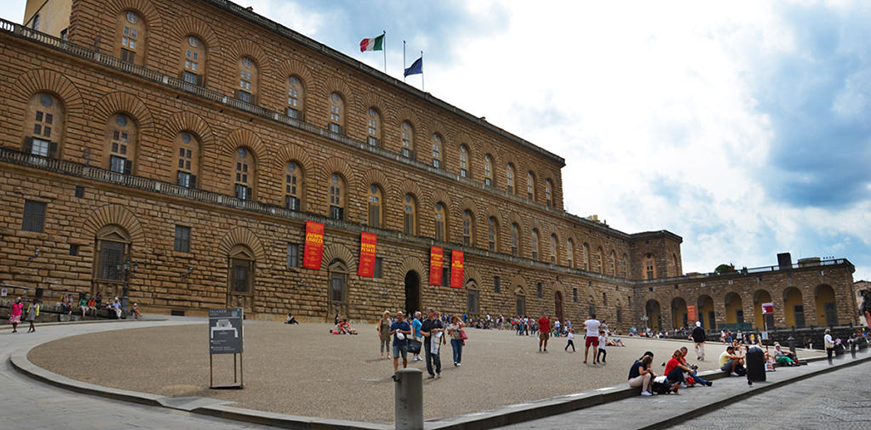
Pitti Palace & Italian language
The Italian language and culture courses organized by Italian me in Florence, take you to the discovery of the wonders of this famous Tuscan city.
Today I would like to tell you about a curiosity related to the Pitti Palace located in Pitti square, which you will be able to admire in detail following the course of Italian for Art History. Pitti Palace was commissioned by Luca Pitti, banker and mercante “Florentine, rival of the Medici family, who wanted a more luxurious residence of the one built for Cosimo the Elder. His new palace had absolutely to have two characteristics: the first one, was that in the square in front of the palace could enter all the Medici palace and that its “windows had to be larger than the main door of the same building. In fact, there are no historical documenti to prove this request, but everything seems to match.
At the time it was built, the Pitti Palace was the largest and most opulent private residence of Florence and also the presence of a large square outside was a novelli. Later it became the residence of the Medici, without changing the name, giving rise to the rebirth of the Oltrarno district, where the noble families “florentine were competing, in the neighboring streets of Via Maggio and Via dei Serragli, in the construction of gorgeous residence. Its facade is extensive and is covered with a characteristic structure called “rusticane”, this is, rough and irregular stones that protrude outward and which become less thick as they rise in height. Probably this work is functional to rainwater dripping and is used in many other noble florentine palaces. This is the curiosity: in the middle of all these irregular stones, is very difficult to see two stones that are more irregular than the others.
One is about ten meters long and the other, not far from the first, is very short, less than fifty centimeters. The use of these two stones has no structural or architectural reason, but only symbolic. The legend says that the constructor, Luca Pitti did install these two blocs because, the longest of them symbolize himself and the other, the smallest one, his rivals, envious and angry because he had amassed a fortune and success in order to build such a residence.


